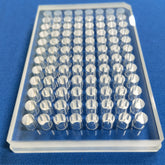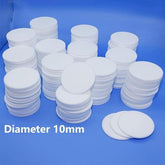Are quartz glass rods safe for chemical reagents?
Quartz glass rods are a widely used tool in laboratories for handling chemical reagents, typically used for operations such as stirring, sampling, and dissolution. Quartz glass rods have a number of advantages over those made of other materials. They are highly resistant to high temperatures, exhibit excellent chemical stability and are less prone to adsorbing substances.
In the field of chemical reagent operations, quartz glass rods are widely regarded as a relatively safe option. Firstly, quartz glass has a high resistance to acids and alkalis, and thus can withstand the action of most chemical reagents. Secondly, the smooth surface of quartz glass is not easily absorbed by toxic or harmful substances, thereby helping to reduce the risk of cross-contamination. In addition, quartz glass rods boast excellent wear and heat resistance, along with the ability to withstand a certain degree of physical impact and high-temperature operation.

It should be noted that, although quartz glass rods are generally safe, there are still a number of points to be aware of when using them: Firstly, before use, please check whether the quartz glass rod is damaged or cracked. If this is the case, please stop using it immediately to prevent accidents. Secondly, during the usage process, it is necessary to avoid excessive force to prevent the quartz glass rod from breaking or being damaged. Furthermore, it is essential that the glass rod is cleaned and stored in a dry and well-ventilated place after use. This will help to prevent the build-up of moisture or the influence of other environmental conditions.
Overall, quartz glass rods are relatively safe for chemical reagents, but they still need to be operated with caution under normal usage conditions to ensure the safety and accuracy of the experimental process. It is hoped that laboratory personnel will pay attention to the above points when using quartz glass rods and strictly adhere to the laboratory operation procedures. This will ensure the smooth progression of the experiments and the accuracy of the results.






